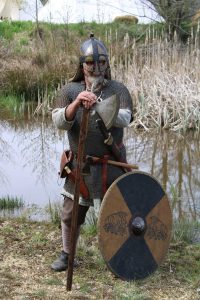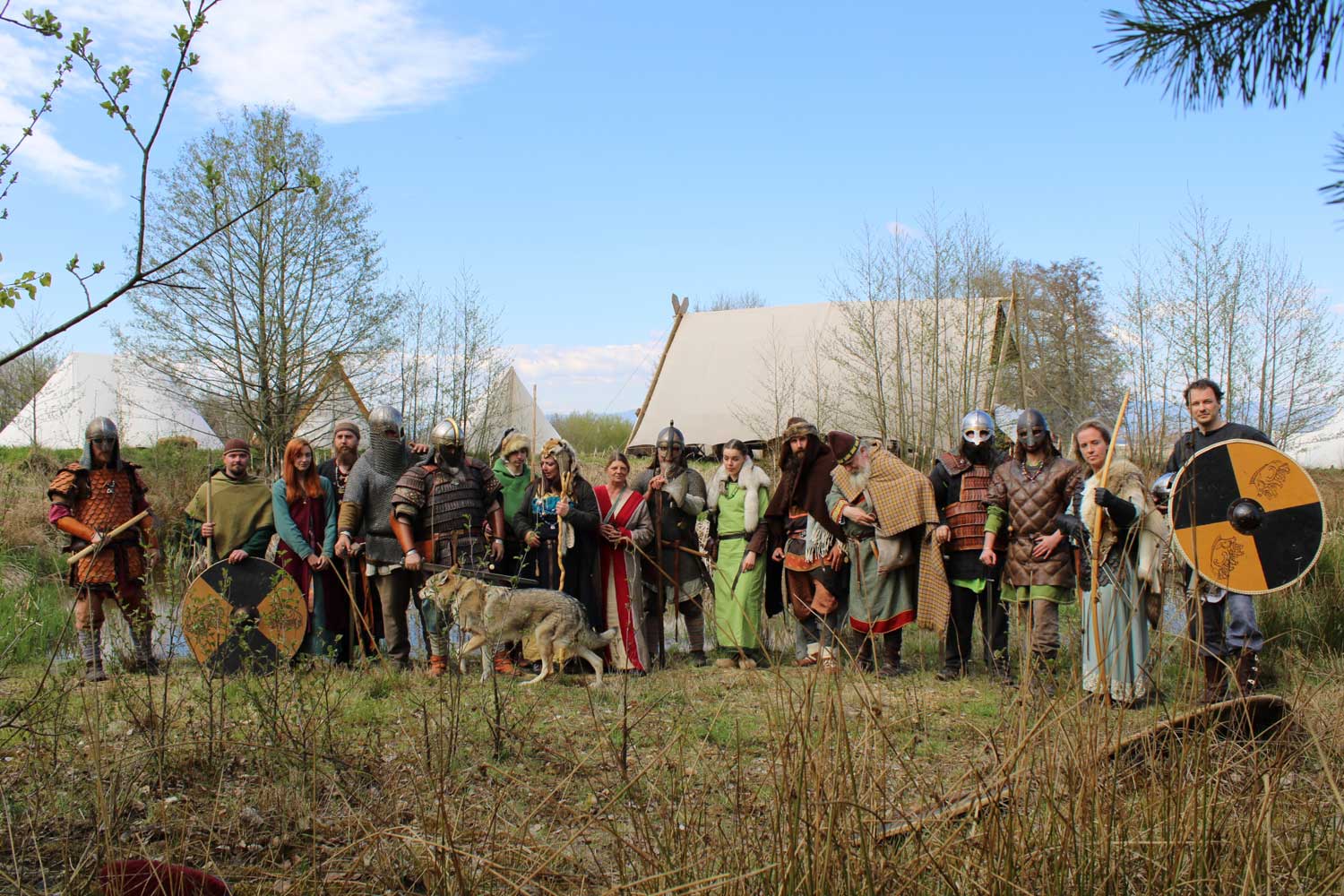It happened in 789 AD.
Three Norsemen ships reached the south coast of England. When the governor received them and asked them to pay their respects to the king, he was summarily killed.
Four years later, the famous attack on the monastery of Lindisfarne, a small island in northeast England, occurred.
 This was the start of countless Viking raids in England, Scotland and Ireland. Ever larger fleets arrived to plunder and later colonize. The Vikings established offshore outposts on the Shetland and Orkney Islands and the Isle of Man. These were ideal bases for the subsequent raids. The Isle of Man was more or less lawless for 100 years, without the protection of powerful jarls or regional warlords. For this reason, the Isle of Man was not properly settled until the mid-10th century.
This was the start of countless Viking raids in England, Scotland and Ireland. Ever larger fleets arrived to plunder and later colonize. The Vikings established offshore outposts on the Shetland and Orkney Islands and the Isle of Man. These were ideal bases for the subsequent raids. The Isle of Man was more or less lawless for 100 years, without the protection of powerful jarls or regional warlords. For this reason, the Isle of Man was not properly settled until the mid-10th century.
We cover the period between 900 and 950 AD, the Jelling style period, and “settle” on the Isle of Man. Although this was primarily occupied by Norwegian Vikings, it was also under Irish-Celtic and Danish influence. Alliances emerged between Norsemen and Celts or Anglo-Saxons, which gives us a wide range and the possibility of a “lively” impression. In doing so, we want to avoid a pure depiction of grave finds. Following the guiding principle of experimental archeology, we try out history in practice.
In addition to the production of clothing, shoes, jewelry, glass beads and general equipment, we deal with the Viking fighting style (shield wall), bow making and other things of everyday life in order to achieve a historically correct impression. We are also currently in the process of rebuilding a Viking ship, a coastal sailor that was found near Roskilde (Denmark).
With all the activities, a nice camp with a social gathering of “like-minded people” who might just be sitting together over a round of mead and boasting about their loot should not be missing!
